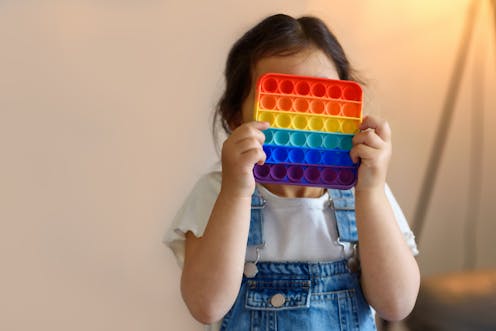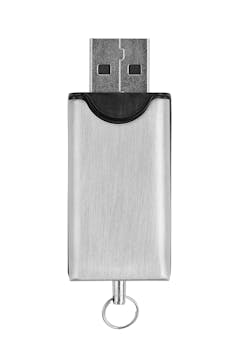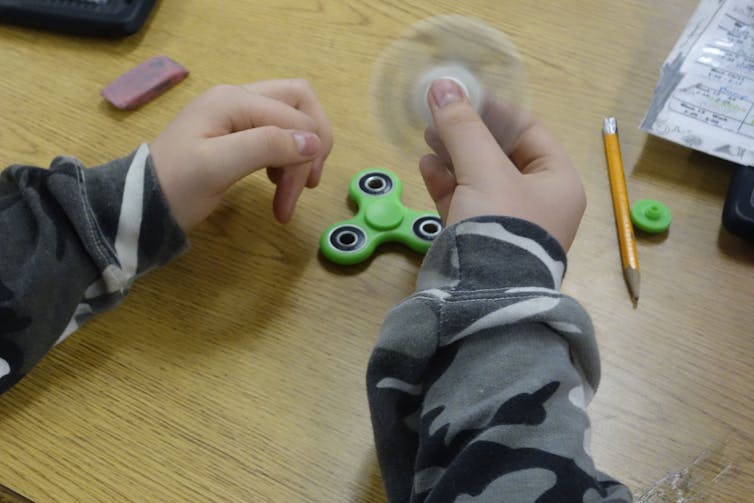Popping toys, the latest fidget craze, might reduce stress for adults and children alike
Though research is still ongoing, therapists' practical experience and adults' and kids' self-reflections suggest that fidget toys can be helpful for emotional and cognitive support.

The newest fidget craze is popping toys. Adults and kids all over the world have been buying up this endlessly reusable version of a longtime favorite fidget activity: popping bubble wrap. Made of silicone and coming in a range of colors, shapes and sizes, they are half-sphere “bubbles” that can be pushed in, making a satisfying soft popping sound. After “popping” them all, you can turn the toy over and start again from the other side.
Some might remember the fidget spinner craze of 2017 and the controversy that these devices caused, with some teachers even banning them from classrooms. Popping toys raise the perennial question of whether and when fidget toys might be useful. Are they a nuisance? Or could having them help you or your children manage pandemic stress and fuzzy thinking?
Over the past several years, my research group has taken a deep look at how children and adults use fidget toys and objects. What we found tells us that these items are not a fad that will soon disappear. Despite sometimes being annoying distractions for others, fidget items seem to have practical uses for both adults and children, especially in stressful times.
Understanding fidgeting
Fidgeting didn’t start with the popping toy and spinner crazes. If you’ve ever clicked a ballpoint pen again and again, you’ve used a fidget item. As part of our work, we’ve asked people what items they like to fidget with and how and when they use them. (We’ve been compiling their answers online and welcome additional contributions.)

People often report that fidgeting with an object in their hand helps them stay focused when doing a long task or keeping still and attentive in a long meeting. Objects people fidget with include paper clips, USB thumb drives, earbuds and sticky tape. But people also buy specialized items such as a popping toys for this purpose.
Fine-tuning for focus
Psychology research about sensation seeking tells us that people often try to adjust their experiences and their environments so that they provide just the right level of stimulation. Different people function well under different circumstances. Some like total quiet to help them focus, while others are happiest working in a busy, noisy environment.
The optimal level of stimulation varies among people and can change for one person throughout the course of a day depending on what they are trying to do. People fine-tune their environments to get things just right – for example, putting on headphones in a noisy office environment to switch to less distracting noise.
A person who can’t get up and walk around to feel more energized or go have a cup of tea to calm down may find it helpful to use a fidget item to stay focused and calm while also staying put.
Another common reason for fidgeting that we saw among adults in our online study is that some fidget objects – such as a favorite smooth stone – can be used to calm them down and achieve a more relaxed, contemplative or even mindful state. Children also spoke about how fidget items help them manage emotions. For example, they might squeeze a stress ball when they feel angry, or they might stroke a soft, fuzzy toy when they are anxious.
Relieving anxiety, focusing attention
The self-reported data we got from adults and children aligns with anecdotal accounts that fidget toys can help children with attention or anxiety issues stay focused and calm in the classroom. In fact, fidget toys have been available for kids to use for therapeutic purposes for quite some time.
There hasn’t yet been a definitive research study about the impact of these toys. In one preliminary study looking at stress ball use, sixth graders who used these fidget toys during instruction independently reported that their “attitude, attention, writing abilities, and peer interaction improved.”
The closest significant research is a study by University of California, Davis behavioral science professor Julie Schweitzer of letting children with ADHD fidget – wriggle, bounce or otherwise move gently in place – while they work on a lab-based concentration task called the “flanker paradigm.” She found that more overall movement in children with ADHD, as measured using an accelerometer on the ankle, did help them perform this cognitively demanding task. After I learned about her research, I approached Schweitzer to join forces, and we’re currently collaborating on the first rigorous study of the effects of fidget objects on people with ADHD, with support from the National Institutes of Health. We aim to better understand how using fidget toys may support people’s cognition.
To do this, my team built a “smart” fidget ball that senses when and how it’s used. Schweitzer’s team is tracking exactly when study participants fidget as they work, and how this correlates with changes in their performance on challenging thinking tasks. (If you happen to live in the Northern California Bay Area, you can apply to take part in the study.)
My group is also working with specialists in children’s social-emotional learning and technology, including Petr Slovak of King’s College London, to understand whether and how giving kids a “smart” fidget item that can respond to their touch might help calm them down and improve their self-soothing skills. We built a small “anxious creature” that children could hug and pet to calm it down. The creature begins with a fast heartbeat and then settles into happy purring once it is soothed. Early results are promising and have recently been applied by commercial product developers to create an interactive toy for calming kids. (I served briefly as a paid consultant on the toy’s initial research and development but have no ongoing financial stake.)

Avoiding distraction
If fidget items are so helpful, why were schools banning the spinners, and why did teachers take them away? Not all fidget items are created equal. Some are more distracting than others. The fidget items most therapists recommend can be used without looking and don’t attract other people’s attention too much with motion or noise. Fidget-spinner motion distracted other kids in classrooms.
Popping toys don’t have movement that attracts others’ eyes, but they do make some noise. Kids in our study reported that noise was a reason they got fidget toys taken away in class. For this reason, popping toys might not be as welcome as the world slowly returns to more in-person learning. But they might be great for kids (or adults) who can hit the mute button in online school and meetings.
[You’re smart and curious about the world. So are The Conversation’s authors and editors. You can read us daily by subscribing to our newsletter.]
Though research is still ongoing, therapists’ practical experience and both adults’ and kids’ self-reflections suggest that fidget toys can be helpful for emotional and cognitive support. There may actually be some benefits in getting yourself or your child a fidget toy to power you through a wall of boring Zoom meetings or a stressful school day.
This is an updated version of an article originally published on May 17, 2017.
Katherine Isbister has received gift funding in the past from Committee for Children, a non-profit, to support her research on smart fidgets, and currently has support from the National Institutes of Health (NIH) for research into the efficacy of fidgeting devices. Isbister received consulting funds to transfer knowledge from her research team's basic research to aid in the design and development of the Purrble device, but has no financial stake in that product.
Read These Next
As DOJ begins to release Epstein files, his many victims deserve more attention than the powerful me
Powerful men connected to Jeffrey Epstein are named, dissected and speculated about. The survivors,…
How to reduce gift-giving stress with your kids – a child psychologist’s tips for making magic and a
Depending on family circumstances and a child’s personality type, gift giving runs the gamut of fun…
The world risks forgetting one of humanity’s greatest triumphs as polio nears global eradication − 7
Polio may finally be defeated in the next 5 years. Will the world recognize what an extraordinary achievement…





